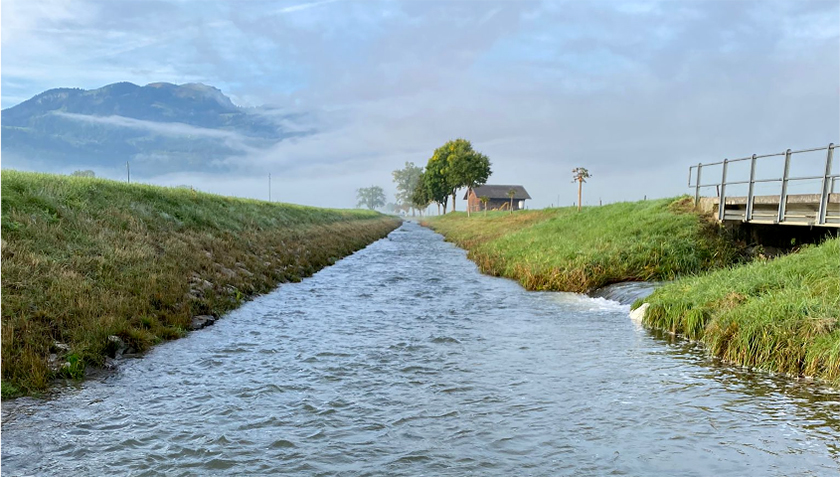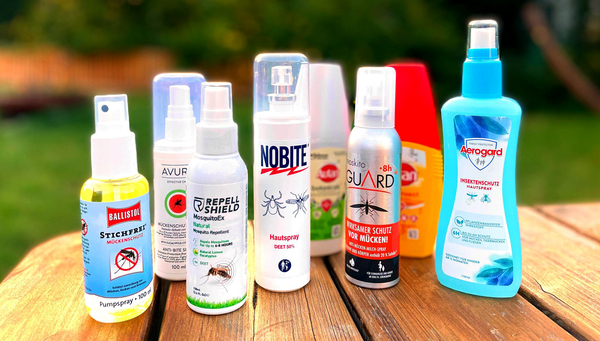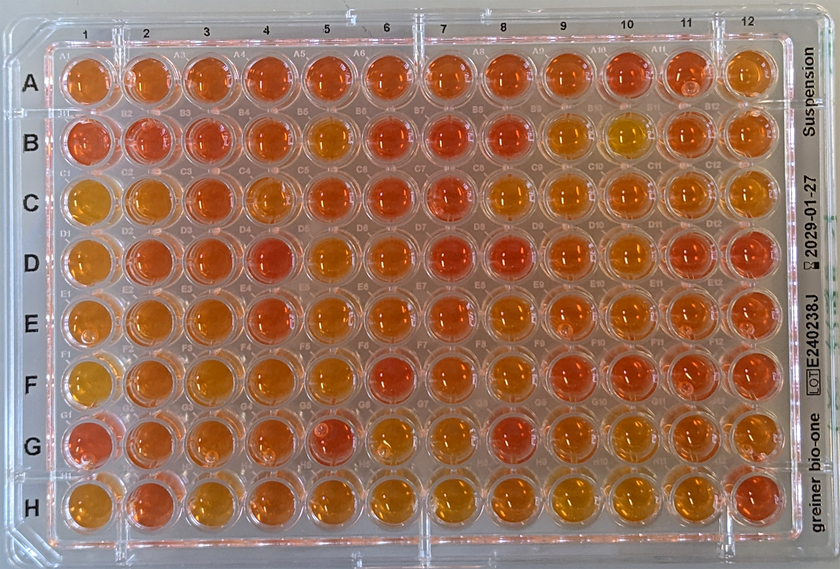News Detail
Biological degradation of mosquito repellents only partially clarified
August 22, 2024 |
When wastewater is channelled back into the river from the sewage treatment plant, the cleaning work is far from over. Microorganisms in the water decompose any remaining foreign substances and contaminants in the water. One of the biocides that is considered biodegradable is diethyltoluamide (DEET). It is found in mosquito repellents and is one of the most frequently measured organic chemicals in surface waters - including in Switzerland. However, little is known about the conditions under which DEET is degraded. The fact that it can be detected in almost all bodies of water in Switzerland over long periods of time also indicates that it is not as biodegradable as assumed (see ‘DEET’ infobox).

High wastewater content = better degradation
As a follow-up to the EcoImpact 2 project, researchers from Eawag's Environmental Microbiology and Environmental Chemistry departments, led by Serina Robinson and Kathrin Fenner, have now discovered that biofilms in waters with a higher proportion of wastewater from sewage treatment plants are better able to degrade DEET (Desiante et al. 2022). Instead of being satisfied with this result, the team led by Eawag microbiologist Serina Robinson and the first author of the study, Yaochun Yu, got to the bottom of the matter. They wanted to find the enzymes that are responsible for the degradation of DEET. To this end, the researchers sequenced the environmental DNA from wastewater at the Eawag test facility and came across thousands of enzymes that are particularly active in biotransformation processes. However, the correlation ‘high proportion of wastewater = more degradation enzymes = better degradation of DEET’ does not tell us which of the many enzymes are doing the work.
The true degraders not yet found
The researchers produced 65 of the thousands of enzymes discovered in the samples in the laboratory themselves in order to analyse them individually and thus find out whether they are able to transform DEET. As a control enzyme, they used an enzyme that had been confirmed in previous studies as being able to decompose the biocide. The researchers assumed that similar enzymes could also degrade DEET. ‘To our surprise, however, this was not the case. The enzymes discovered in the samples were active in performing other functions, but they were not able to transform DEET,’ says Robinson. The realisation that even similar enzymes fulfil different functions is exciting for the researchers. ‘It shows that testing hypotheses with experiments can be crucial,’ says Robinson.
‘Where assumptions turn out to be wrong, we learn’.
Database for the future
Despite the collaboration between the two Eawag departments of Environmental Microbiology and Environmental Chemistry, the biochemical processes in our waters are not yet fully understood, as is the case with DEET. By analysing and sequencing biofilms in greater detail, it may be possible in the future to predict which substances are degraded in water and to what extent, based on the composition and nature of the microorganisms. The researchers carried out this project exclusively in the laboratory. An follow-up collaboration between Robinson and Fenner is now investigating waters with inflows from sewage treatment plants directly in the field. It is part of a Swiss National Science Foundation (SNSF) and German Research Foundation (DFG) project led by Eawag researcher Kathrin Fenner and Michael Zimmermann from the European Molecular Biology Laboratory (EMBL).
Robinson's team is also extending the sequencing and analysis to other pollutants, such as fluorinated chemicals. The aim is to create the most comprehensive database possible on microorganisms and their role in the environment. ‘When policymakers draw up guidelines for biocides, it is worth knowing what the organisms in the environment do with them - or are capable of doing,’ says Robinson. This can support politicians, specialist agencies and environmental organisations in taking sustainable measures to combat pollutants in water bodies.
Infobox DEET
The biocide diethyltoluamide (DEET) is used worldwide in mosquito repellents and ends up in the environment. It is one of the most frequently measured organic chemicals in surface waters and can be detected all year round. So far, little is known about the risks to humans and the environment. A study with Eawag researcher Heinz Singer has summarised the occurrence, fate and emission dynamics of DEET in Switzerland. Singer's conclusions: It cannot be solely the mosquito repellent used predominantly in the warm season that is responsible for the high concentration in the environment, and the rate of DEET degradation in the environment is probably not as high as expected from the literature.
Cover picture: Most mosquito repellents contain the active ingredient DEET (Photo: F.A.Z. Purchase Compass).


